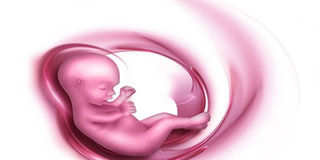Premature births linked to changes in vaginal bacteria

Treatment with antibiotics for premature membrane rupture may be detrimental for some pregnant women
Changes in vaginal bacteria are strongly linked with a pregnant woman’s water breaking early, leading to preterm birth, according to new research published in the journal BMC Medicine.
Even a subtle change in the usual (healthy) balance of bacteria can lead to the waters breaking early and increase the risk of sepsis for the newborn.
During pregnancy babies are protected inside the amniotic sac, and the surrounding membrane ruptures – the so-called breaking of waters – as a precursor to labour that starts off the normal birthing process.
If the membrane ruptures before 37 weeks of gestation (before term), the baby remains without the protective membrane and is at increased risk of infection – as the vaginal bacteria spread upwards to the placenta and uterus.
In order to reduce this risk, women whose waters have broken early are given intravenous antibiotics, thereby reducing chances of infection.
Interestingly, for a small proportion of women, this standard antibiotic treatment can actually disrupt the balance by eradicating good bacteria and allowing harmful bacteria to take their place in the vagina, with negative outcomes for the baby.
This means that for some women with premature membrane rupture, antibiotics may be beneficial, while for others, this same treatment may be detrimental.
For the latter set of women, the researchers recommend alternative treatment to mitigate risks.
For the study, researchers collected vaginal swab samples from 250 pregnant women who were or were not at risk of delivering prematurely.
Twenty-seven women had a history of premature birth or miscarriage, and so were considered at high risk of premature delivery.
The team also collected samples from 87 women who came to hospital with premature membrane rupture.
MEMBRANE RUPTURE
The women with membrane rupture were treated with oral erythromycin four times a day for 10 days.
Vaginal swabs were taken before treatment commenced, then after 48 hours, a week and two weeks.
In both sets of women, the researchers analysed bacteria present, their proportions and changes at different stages of the pregnancy to find the impact of premature membrane rupture and antibiotic treatment on vaginal microbiota.
For women who were treated with antibiotics after membrane rupture, there was a drop in lactobacillus and an increase in other types of bacteria, including potentially harmful ones such as staphylococcus and streptococcus.
However, for women who had lower levels of lactobacillus before treatment, the antibiotics served to reduce the potentially harmful bacteria as well.
“This study is one of the first to show that almost half of pregnant women may have unbalanced vaginal microbiota before premature rupture, providing further evidence of the role of bacteria in some cases of premature births,” said Dr David MacIntyre, one of the researchers.
Previous research showed that over the course of pregnancy the bacteria that colonise the vagina become less diverse and are dominated chiefly by lactobacillus, the same type of bacteria found elsewhere in the body including the gut and mouth.
Common causes of preterm birth include multiple pregnancies, infections and chronic conditions such as diabetes and high blood pressure; however such discovery will advance the solution to prevent preterm birth.
The researchers suggest that further studies are needed to assess the current clinical guidelines for women with premature rupture and that developing alternative ways to treat women, such as using more selective targeted antibiotics, could potentially improve outcomes for women and their babies.


